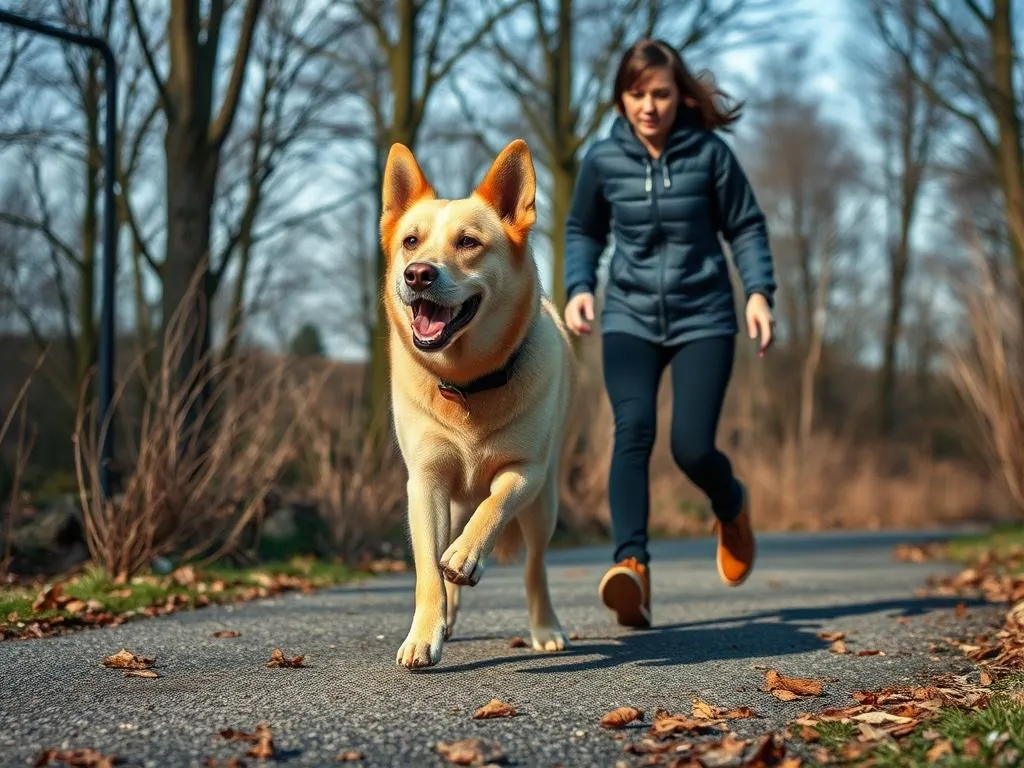
Owning a pet is not just about companionship; it’s about responsibility, love, and a commitment to a healthier lifestyle. Did you know that pet owners are 54% more likely to meet daily exercise requirements? Walking your dog presents the perfect opportunity to enhance your fitness while spending quality time together. By integrating exercises to do while walking the dog, you can achieve a win-win situation for both you and your furry friend.
Walking your dog is not just a leisurely stroll; it can also be an effective workout. Staying active is crucial for both dogs and their owners to maintain a healthy lifestyle. This article will delve into the benefits of combining dog walking and exercise, provide tips on preparing for your walk, and offer a range of exercises that can be performed while enjoying the outdoors with your dog.
Benefits of Combining Dog Walking and Exercise
Physical Health Benefits
Incorporating exercises to do while walking the dog can significantly enhance your physical health. Regular walking, coupled with strength exercises, can lead to improved cardiovascular health, aiding in weight management and muscle toning. Engaging in physical activity helps to keep your heart healthy, reduces the risk of chronic diseases, and boosts your overall fitness levels.
Mental Health Benefits
Exercise is a natural mood booster. Physical activity releases endorphins, which can alleviate stress and anxiety. Walking your dog while engaging in exercises helps clear your mind, reduces symptoms of depression, and promotes a sense of overall well-being. The combination of being outdoors and exercising can lift your spirits, making your dog walks a delightful experience for both of you.
Strengthening Bond with Your Dog
Engaging in shared activities enhances the bond between you and your dog. When you incorporate exercises to do while walking the dog, you create enjoyable experiences that build trust and connection. Your dog not only enjoys the physical activity but also benefits from the mental stimulation that comes with varied exercises.
Preparing for Your Walk
Choosing the Right Gear
Before embarking on your dog-walking adventure, ensure you have the right gear. Comfortable, supportive footwear is essential to withstand the impact of walking and exercising. Choose moisture-wicking clothing that allows for free movement and adjusts to temperature changes. Accessories like a water bottle, a collapsible bowl for your dog, and a good quality leash will ensure a smooth experience.
Assessing Your Dog’s Fitness Level
Understanding your dog’s fitness level is crucial before starting any exercise routine. Factors like age, breed, and health status can influence what activities are suitable. For instance, older dogs may require gentler exercises, while high-energy breeds may thrive on more rigorous activities. Always consult your veterinarian if you have any concerns about your dog’s health before beginning a new exercise regime.
Setting Goals
Setting realistic exercise goals for both you and your dog is vital. Begin with achievable targets, such as walking for 30 minutes a day, and gradually incorporate more exercises as your fitness levels improve. Celebrate small milestones, which will motivate you and your dog to stay active together.
Exercises to Do While Walking the Dog
Warm-Up Moves
Before diving into your walk, it’s essential to perform some warm-up moves. Simple stretches like arm circles, leg swings, and gentle torso twists can help prepare your muscles for the upcoming workout. Focus on dynamic movements that increase your heart rate without straining your body.
Dynamic Exercises
Incorporating dynamic exercises into your dog walk can enhance your fitness levels. Here are a couple you can try:
-
Walking Lunges: As you walk, take a step forward with one leg, lowering your hips until both knees are bent at about a 90-degree angle. Alternate legs with each step. This exercise helps build strength in your legs and glutes while maintaining balance.
-
Side Shuffles: Find a safe area where you can shuffle sideways for a few steps. Keep your feet close together, bending your knees slightly, and shuffle from side to side. This exercise improves lateral movement and engages different muscle groups.
Strength Training Exercises
Adding strength training exercises can be a game-changer for your fitness routine:
-
Bodyweight Squats: Stop at a safe spot during your walk, and perform bodyweight squats. Stand with your feet shoulder-width apart and lower your body as if you are sitting back into a chair. Push through your heels to rise back up. Aim for 10-15 repetitions. Variations include sumo squats or one-legged squats for added challenge.
-
Push-Ups on Benches or Curbs: Find a sturdy bench or curb and perform push-ups. Position your hands shoulder-width apart and lower your body until your chest nearly touches the bench. Push back up to the starting position. This exercise strengthens your chest, shoulders, and triceps.
Core Workouts
Core strength is essential for overall fitness, and you can engage your core while walking your dog too:
-
Plank Holds Against a Tree or Bench: Find a sturdy tree or bench. Place your hands on it and walk your feet back until your body is in a straight line from head to heels. Hold this position for 20-30 seconds. This exercise targets your core, shoulders, and back.
-
Russian Twists While Standing: While standing, hold your hands together in front of you and twist your torso to the right, then to the left. This motion engages your obliques and can be performed while walking at a moderate pace.
Flexibility and Cool Down
Post-exercise, it’s crucial to cool down properly:
-
Static Stretching: After your walk, take a few minutes to perform static stretches. Focus on major muscle groups like hamstrings, quadriceps, and shoulders. Hold each stretch for 15-30 seconds to improve flexibility.
-
Post-Walk Doggie Stretches: Don’t forget your furry friend! Help your dog stretch by encouraging them to perform basic stretches, like reaching for their paws or bending to sniff the ground.
Tips for Making It Fun
Integrating Playtime
Incorporating playtime into your dog walks makes the experience enjoyable for both of you. Consider bringing a ball or frisbee to engage your dog in a game of fetch during your walk. This not only provides exercise for your dog but also offers a fun break that can elevate your mood.
Exploring New Routes
Changing your walking route can provide mental stimulation for both you and your dog. New sights, sounds, and smells keep walks interesting and can even lead to discovering new parks or trails. Variety is the spice of life, and it applies to dog walking too!
Involving Friends and Family
Walking with friends or family can enhance motivation and enjoyment. Invite others to join you, making it a social event. Not only does this provide accountability, but it also turns exercise into a group activity, allowing you to bond with both your loved ones and your dog.
Safety Considerations
Understanding Your Environment
Being mindful of your surroundings is essential for safety. Stay alert to traffic, other dogs, and potential hazards like uneven terrain or litter. Always use a sturdy leash to maintain control over your dog, especially in busy areas.
Hydration for Both You and Your Dog
Hydration is key during any exercise routine. Bring water for yourself and ensure your dog has access to water as well. On warm days, take breaks to hydrate and allow your dog to cool down.
Recognizing Signs of Fatigue
Pay attention to your body and your dog’s signals. Signs of fatigue can include heavy panting, lagging behind, or reluctance to continue. It’s essential to listen to these cues and take breaks as needed to prevent overexertion.
Creating a Routine
Setting a Schedule
Establishing a regular walking and exercise schedule can help you stay consistent. Aim for at least 30 minutes of activity most days of the week. Consistency not only builds a habit but also reinforces the benefits for both you and your dog.
Tracking Progress
Consider using apps or journals to monitor your activity levels and improvements. Tracking progress can help you stay motivated and aware of how far you’ve come. Look for apps that can log walks, track distance, and even offer reminders for exercise sessions.
Modifying the Routine
It’s important to be flexible and modify your routine as needed. Recognize signs that indicate it’s time for a change, whether that’s increasing the intensity of your workouts or adjusting the duration of your walks. Keeping things fresh and exciting will help maintain your enthusiasm for exercise.
Conclusion
The benefits of integrating exercises to do while walking the dog are multifaceted, enhancing your physical and mental health while deepening the bond with your furry companion. From simple warm-up moves to strength training and flexibility exercises, there are numerous ways to spice up your dog walking routine.
So, lace up your shoes, grab your dog’s leash, and take the first step towards a healthier lifestyle. You and your dog will be happier, healthier, and more connected than ever. Whether it’s a brisk walk, a play session, or a new route, the journey awaits—make it enjoyable for both of you!









